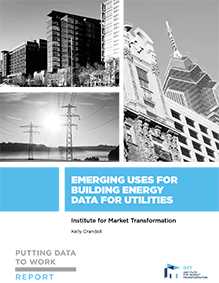Emerging Uses for Building Energy Data for Utilities
Across the U.S., an increasing number of cities, counties, and states are examining building performance benchmarking and transparency as a critical step in addressing building energy and water use. These energy benchmarking and transparency requirements generate new and robust building-level datasets.
This report describes the opportunities that energy utilities can realize from the growing wealth of data about building energy performance generated by activities at the state and local level. Energy utilities—including investor-owned, municipal, or cooperative retail entities—that provide resources ranging from electricity and natural gas to steam or efficiency, can use the development of building performance policies or programs by cities as an opportunity for innovation internally. This report first describes the types of data that voluntary or mandatory city building performance programs create. It next summarizes several emerging ways to use this data and their potential value to utilities. Finally, it describes actions that utilities can take internally to realize these benefits.
This report is part of IMT’s Putting Data to Work toolkit. This comprehensive toolkit is the result of a three-year pilot project that aimed to use building performance data and asset information to help city government sustainability leaders, utilities, and efficiency program administrators and implementers make more informed business decisions and increase building efficiency. The project examined energy efficiency program design and delivery in the District of Columbia and New York City to produce a toolkit of best practices, actionable tools, and case studies to enable other local governments, utilities, and efficiency program implementers to replicate successes. The full toolkit, as well as details on upcoming blogs and webinars associate with the project, is available at imt.org/PuttingDatatoWork.
